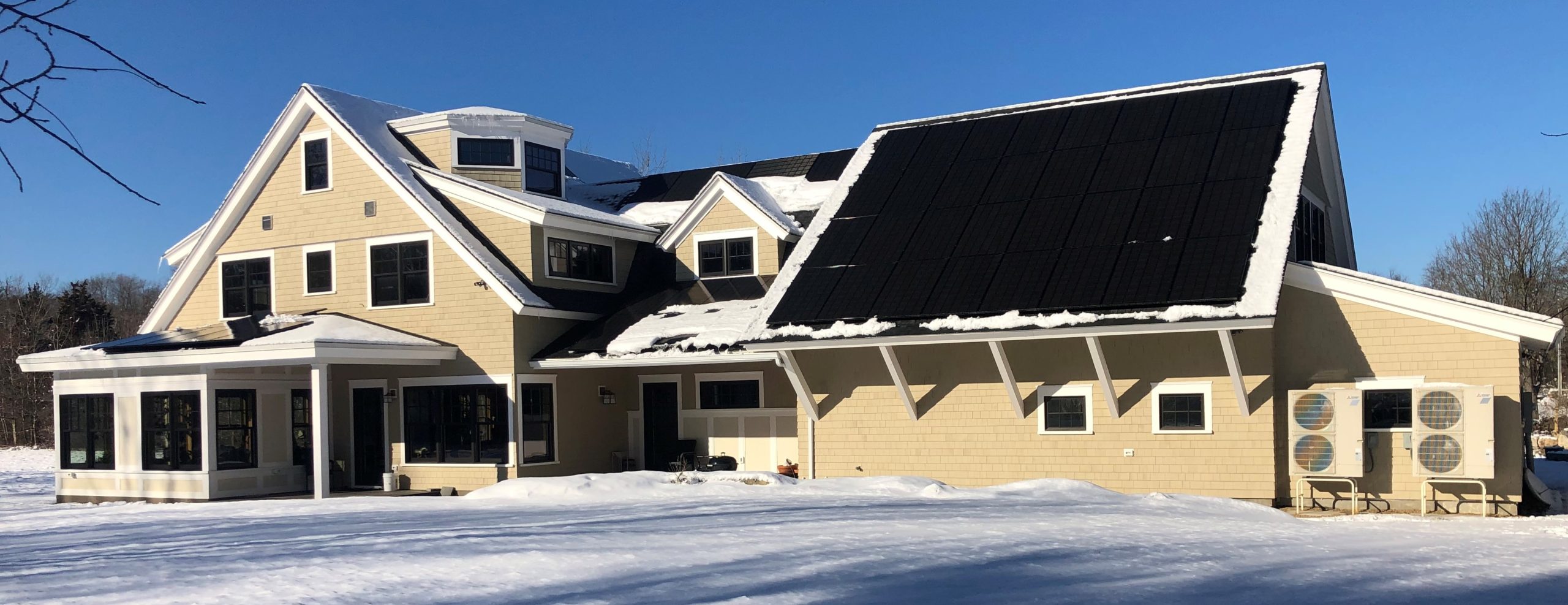Category: Sustainable Building
Measuring the performance (“EUI”) of your zero net-energy house is important. There is a saying, “You can’t manage what you don’t measure”. Without measuring, you don’t know how energy efficient your house is. Fortunately, I measured and found out my house wasn’t performing as expected. What did I measure? What did I find? And how did I fix the problem? The standard metric to measure the performance of a net-zero house is to calculate the energy-use intensity (“EUI”). As a refresher as to what EUI is and how to measure it, click here. Ideally, the EUI for a zero net-energy should be below15, and definitely below 20. The EUI for THE HAYFIELD HOUSE is about 15, but I wish it was even lower.– I’ll explain...
A SECRET RECIPE TO GET TO NET-ZERO??? One of the reasons why many homebuilders shy away from building a zero net-energy home is that it sounds so complicated. The various experts don’t help with their barrage of technical advice on building design, insulation strategies, computer modeling, inspections, auditing, testing, etc. Furthermore, a discussion of incremental costs is frequently lacking. — Instead, homeowners just want someone to tell them in simple terms how to get to net-zero, and what it will cost. What’s the secret recipe? The best recipe that I’ve currently found is provided in the book The New Net Zero, by William Maclay and Maclay Architects. Their recipe is based on experience, so I expect it works quite well in the Northern New England...
The Rocky Mountain Institute states in their 2018 paper “Economics of Zero-Energy Homes” that; “… ZE (Zero-Energy) and ZER (Zero Energy Ready) homes comprise less than 0.1% of the current US housing stock”. Deduct from this figure the ZER component (which likely is the largest component), and further deduct any house that uses fossil fuels, and you are left with a very tiny (unknown) number of net-zero energy, zero carbon homes. One can also visit the Net-Zero Energy Coalition (www.netzeroenergcoalition.com) and the New Building Institute (www.newbuildings.org), both of which attempt to track these types of numbers, but their figures are more useful in gauging trends, not absolute numbers. Although the present number of zero net-energy (“ZNE”) homes is low, eventually nearly every new single-family house...
NET-ZERO BUILDING…. How to get there. Constructing a zero net-energy house that uses zero fossil fuel might sound hard, but it’s easier than you’d think (which is one of the reasons why I started this blog). Not many people have tried to construct a zero net-energy house. The Rocky Mountain Institute states in their 2018 paper “Economics of Zero-Energy Homes” that; “… ZE (Zero-Energy) and ZER (Zero Energy Ready) homes comprise less than 0.1% of the current US housing stock”. Deduct from this figure the zero energy ready component (which likely is the largest component), and further deduct any house that uses fossil fuels, and you are left with a very tiny (unknown) number of net-zero energy, zero fossil fuel homes. One can also visit...
BUILDING A ZERO NET-ENERGY HOUSE, YOU CAN DO IT! One of the issues with building a zero net-energy house is that the literature makes the journey seem very daunting. The literature contains a plethora of architectural, engineering, and building specifications and terms. It can become quite an intimidating exercise if one dives into the details. In short, if you know too much, you can get scared away from building a zero net-energy (“ZNE”) house. But it’s not really that hard. I wanted to build a very efficient, all-electric house powered by solar. However, I was hesitant to commit to saying that I was building a ZNE house as I really didn’t know what I would be committing to. I didn’t know where to turn to...
THE HAYFIELD HOUSE My father built a house in 1960 in an old potato field (“THE POTATO FIELD HOUSE”). The house was a Deck House built using post and beam construction with tongue-and-groove ceiling decking. There was no insulation in the roof, other than the insulating value of the roof decking. The windows were large plate glass, of single pane construction. The walls were framed using 2X4 inch studs, allowing for only modest wall insulation. The house was built on an uninsulated concrete slab with the first floor heated with radiant heat using an oil fired furnace. The result was a very energy inefficient house which released a lot of CO2 due to the large amount of heating oil that was burnt. As a child,...







[…] I also knew nothing about air-source hot water tanks that are used in many ZNE homes. That was OK,…